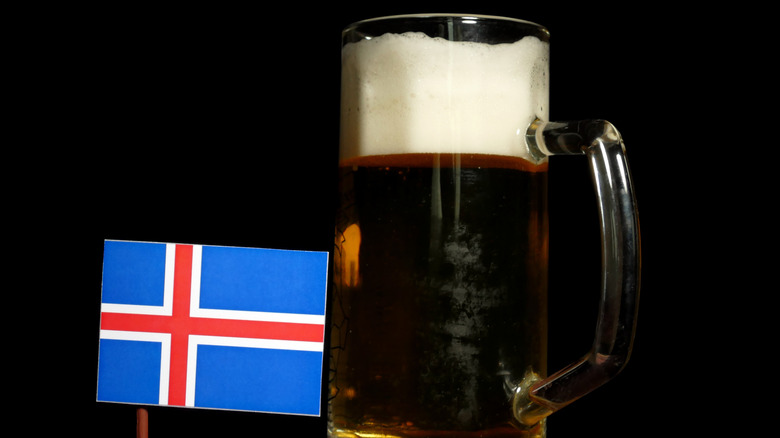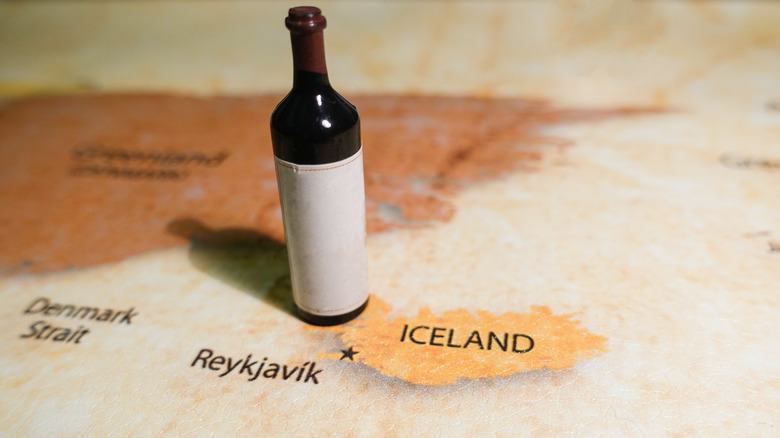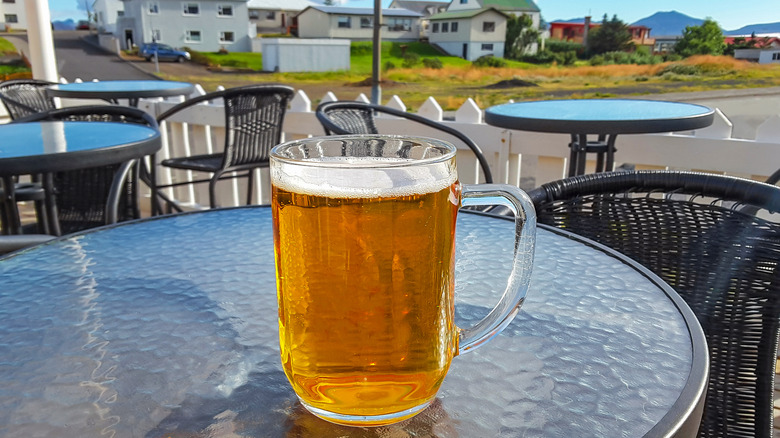Why Beer Was Once Illegal In Iceland
On March 1, 1989, the people of Iceland had one thing on their minds: beer. For the first time in nearly 75 years, full strength beer was available to the nation's population. On that day, thousands of Icelanders participated in bacchanals, some of which made it to live television. So why did Iceland spend the majority of the 20th century not partaking in one of the world's staple alcoholic beverages? As with many countries, in the early 1900s century, prohibition was a hot-button issue. Additionally, Iceland offered its own unique geographical and political conditions that further affected their relationship with alcohol.
For one, Iceland's isolated location meant importing alcohol was difficult until the 20th century, and the nation drank less as a result. Furthermore, rejecting alcohol became entwined with the Icelandic independence movement. Starting in roughly 1830, Iceland began a protracted struggle for independence from the ruling power of Denmark. During this period, the consumption of beer began to be linked to Danish customs. Rejecting the beverage thus became a source of patriotic pride.
Others saw ending alcohol consumption as a necessary step to reversing centuries of poverty. All of these factors came to a head in 1909, when the newly independent legislature passed a law banning the sale and consumption of all alcoholic beverages. Six years later, the law was ratified by a vote and went into effect in 1915.
Beer before and after prohibition
Prohibition was immediately undermined by the prevalence of smuggling and home brewing. Doctors also played a part, freely prescribing spirits and wine as a salve for everyday ailments. Despite this, beer was never offered and remained persona non grata among the nation's imbibers. The legal ban began to falter in 1921, when Spain threatened to cease importing salt cod from the country unless they agreed to import Spanish wine in return. In order to maintain a crucial part of the economy, red and rose wine were made legal the next year. In 1935, liquor and spirits were legalized as well. Even with the almost complete dismantling of prohibition, beer was still illegal.
Icelandic legislators staked out a claim that beer, being weaker and arguably easier to drink, would provide children with a gateway to stronger spirits. Similarly, proponents of the ban maintained that beer's cheaper price would lead to binge drinking and alcohol abuse. A kind of beer facsimile was legalized, but it had to be kept below 2.25% alcohol (in contrast, a standard beer is about 5%.) Some Icelanders would bring the beer up to full strength by dropping a shot of schnapps into it, but the taste was reportedly less than ideal.
From legalization to today
In 1989, the issue finally came to a head, and beer was fully legalized. Initially, only five kinds of the beverage were sold, but as the 1990s continued — and an international craft beer renaissance began — this number ballooned. Craft breweries incorporated local herbs and native ingredients, such as blueberries, to create distinctly Icelandic styles of beer. Today, you can drink incredibly well in the country. In a unique wrinkle of modern Icelandic brewing culture, one brewery has even produced what's known as dead whale beer.
Despite this, the population's alcohol consumption remains comparatively low. The country drinks less than any of the other Nordic countries, an area with lower alcohol consumption than the rest of the continent. This is partly due to Iceland still holding a strict stance on alcohol. Outside of bars and restaurants, the only place to purchase alcohol is in state-run stores that have limited hours and high taxes. The cost of alcohol also remains quite high, whether in these stores or at bars. But despite this, Icelanders are still going on 35 years of being able to drink beer legally.



